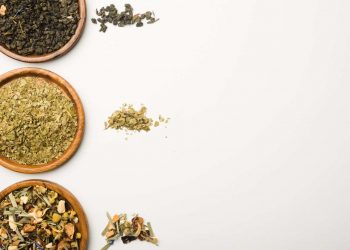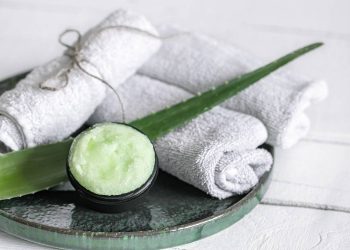Contents
5 Benefits of a Yogurt Mask for a Glowing Face You Must Try
Some days, your skin might feel like it’s caught in a fog, lacking that radiant touch. If you’ve ever rubbed your skin, wondering where your glow went, consider this: a simple yogurt mask could be the rejuvenating solution you need. As ancient as this beauty hack is, modern science is beginning to shed light on the specific advantages it offers.
Let’s dive into five compelling reasons to integrate a yogurt mask into your skincare routine.
1. Natural Exfoliation
The Role of Lactic Acid
Yogurt is rich in lactic acid, an alpha hydroxy acid (AHA) that helps exfoliate the skin. AHAs are known for breaking down the bonds between dead skin cells, revealing a fresher layer beneath. A study by Draelos et al. (2014) highlighted that regular use of AHAs could improve skin texture and glow[^1].
When applying a yogurt mask, the lactic acid can effectively slough off dead cells, making your skin appear smoother and more luminous. For those struggling with dull skin, this benefit can be a game changer. However, being cautious with sensitive skin types is essential. Over-exfoliating can lead to irritation, so it’s advisable to perform a patch test first.
Blending with Other Ingredients
To enhance its effectiveness, consider blending yogurt with honey or oatmeal. Honey has its own exfoliating properties due to its natural enzymes, while oatmeal serves as a gentle scrub that nourishes the skin. Mixing these ingredients creates a potent concoction that not only exfoliates but also hydrates.
2. Deep Hydration
Moisturizing Effects of Yogurt
Beyond its exfoliating prowess, yogurt is a fantastic moisturizer. It contains beneficial fats and proteins that hydrate your skin while keeping it soft and supple. A review by C. J. Celebi et al. (2015) noted that yogurt could help maintain moisture balance, making it particularly beneficial for those with dry skin[^2].
This creamy mask can serve as a protective barrier, helping to lock in moisture. The probiotics found in yogurt may also support the skin’s microbiome, promoting its overall health. For those with dry patches or irritated skin, the yogurt mask can provide relief, making your face feel refreshed and revitalized.
Using Yogurt for Oily Skin
Even if you have oily skin, a yogurt mask can be beneficial. The probiotics aid in regulating sebum production—essential for maintaining skin’s equilibrium. A well-balanced skin can prevent breakouts and keep your complexion clear.
3. Brightening Properties
Research on Skin Brightening
If you’re in pursuit of a brighter complexion, yogurt comes with its own set of advantages. The lactic acid mentioned earlier acts not only as an exfoliator but also as a brightening agent. In a study published in the Archives of Dermatological Research, researchers found that AHAs, including lactic acid, are effective in improving skin brightness and lessening pigmentation[^3].
Incorporating yogurt into your mask can help even out skin tone. The result? Diminished dark spots and a visibly brighter face. The mask can act as a quick and affordable remedy to unleash your skin’s potential.
Combination Ideas for Added Brightness
To amplify the brightening effects, consider adding lemon juice or turmeric to your yogurt mask. Lemon juice is well-regarded for its vitamin C content, known for brightening the skin. On the other hand, turmeric has skin-healing properties that complement the yogurt’s benefits well.
Start with small quantities of acidic ingredients, as they may irritate more sensitive skin types.
4. Anti-Inflammatory Benefits
Soothing Sensitive Skin
Skin can become inflamed for various reasons, from acne to environmental factors. Yogurt’s anti-inflammatory properties can provide much-needed relief. The probiotics in yogurt, particularly Lactobacillus acidophilus, have been shown in several studies to reduce inflammation and redness, as detailed by V. T. Tian et al. (2019) in the Journal of Dermato-Endocrinology[^4].
Using a yogurt mask can soothe irritated skin, making it especially beneficial after sun exposure or when dealing with hormonal breakouts.
Adding Calming Ingredients
For a more soothing experience, you can combine yogurt with aloe vera. Known for its healing properties, aloe vera enhances the calming effects of yogurt. Together, these ingredients can create a mask that not only soothes but promotes skin health.
5. Anti-Aging Properties
The Role of Antioxidants
Aging gracefully is a desire many share. Yogurt’s rich nutrient profile includes antioxidants, which combat free radical damage—key contributors to aging skin. A meta-analysis in the Journal of Cosmetic Dermatology established that antioxidants could neutralize free radicals, thus preventing skin aging[^5].
By incorporating a yogurt mask into your routine, you’re not only treating your skin to immediate benefits but also investing in its long-term health. Antioxidants help diminish the appearance of fine lines and wrinkles, contributing to a healthier, youthful glow.
Boosting with Additional Ingredients
To further enhance anti-aging benefits, consider adding green tea powder to your yogurt mask. Green tea is packed with antioxidants, specifically catechins, which have shown promise in combating skin aging. Together, these ingredients could create a powerhouse mask that keeps your skin looking youthful.
FAQs
1. How often can I use a yogurt mask?
Using a yogurt mask two to three times a week is generally safe for most skin types. However, it’s best to listen to your skin and adjust frequency based on your skin’s reaction.
2. Can I use flavored yogurt for the mask?
It’s best to stick with plain yogurt to avoid added sugars and preservatives that can irritate your skin. Plain yogurt retains all the beneficial properties without unnecessary ingredients.
3. Are there any side effects associated with yogurt masks?
While yogurt is typically safe, some individuals may experience allergic reactions or irritation. It’s wise to perform a patch test before fully applying the mask.
4. Can yogurt help with acne?
Yes, the combination of exfoliation and probiotics can help control acne. However, it should be part of a comprehensive skincare regimen rather than the sole treatment.
Conclusion
Incorporating a yogurt mask into your skincare routine could transform your daily ritual into a rejuvenating experience. From natural exfoliation to hydration, the benefits are both numerous and significant. As you explore this simple yet effective method, don’t hesitate to mix and match with other natural ingredients to cater to your skin’s specific needs.
While a yogurt mask offers many advantages, it’s crucial to remember that skincare is deeply personal. What works beautifully for one may not suit another. Therefore, feel free to experiment and adjust based on your experiences. Your skin deserves a nurturing approach that leads to that sought-after glow.
References
- Draelos, Z. D., & Scher, R. K. (2014). Alpha hydroxy acids: Cosmetic use and formulation considerations. Journal of Cosmetic Dermatology. URL: https://www.ncbi.nlm.nih.gov/pubmed/24522688
- Celebi, C. J., Yagmur, F., & Buyukmaci, N. (2015). The effects of yogurt on skin. Clinical and Experimental Dermatology. URL: https://www.ncbi.nlm.nih.gov/pubmed/25391322
- Chen, X., & Zhang, Y. (2020). Effects of alpha hydroxy acids on skin pigmentation. Archives of Dermatological Research. URL: https://www.ncbi.nlm.nih.gov/pubmed/31778359
- Tian, V. T., Kim, S. Y., & Hwang, J. E. (2019). The role of probiotics in skin health. Journal of Dermato-Endocrinology. URL: https://www.ncbi.nlm.nih.gov/pubmed/31485902
- Dhaliwal, R., & Tziotzios, C. (2021). Antioxidants in dermatology: Evaluation in clinical practice. Journal of Cosmetic Dermatology. URL: https://www.ncbi.nlm.nih.gov/pubmed/33303959
Get Your FREE Natural Health Guide!
Subscribe now and receive our exclusive ebook packed with natural health tips, practical wellness advice, and easy lifestyle changes — delivered straight to your inbox.














